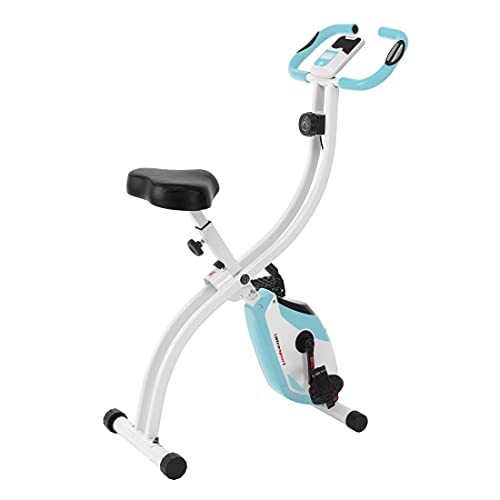In the ever-evolving world of fitness, the exercise cycle bike has firmly established itself as a cornerstone of effective workout regimens. While traditional bicycles paved the way for outdoor adventures, their stationary counterparts provide health enthusiasts with the opportunity to indulge in cycling no matter the weather, time, or location. Beyond convenience, exercise cycle bikes offer a plethora of benefits, making them an essential part of any home gym or fitness studio. This article delves into the evolution, benefits, varieties, and considerations associated with cycle bikes, while answering common questions about them.
The Evolution of the Exercise Cycle Bike
The inception of the exercise cycle bike can be traced back to the late 18th century when the first rudimentary stationary bikes were invented. These early models, though functional, lacked the sophistication and technology of contemporary designs. Over the decades, advancements in engineering and a deeper understanding of fitness physiology have transformed exercise cycle bikes into highly specialized equipment. Today, they offer a diverse range of features, catering to both novice users and professional athletes alike.
Benefits of Using an Exercise Cycle Bike
Exercise cycle bikes are lauded for numerous reasons, making them a versatile workout choice:
Cardiovascular Health: Regular use elevates heart rate, improving cardiovascular efficiency and reducing the risk of heart-related diseases.
Low-Impact Exercise: Unlike running or jogging, biking is gentle on the joints, making it suitable for individuals with arthritis or joint issues.
Calorie Burning: An excellent way to burn calories, cycling can complement weight loss goals while boosting metabolic rate.
Muscle Tone and Strength: Primarily targeting the lower body, cycling helps tone muscles in the calves, thighs, buttocks, and to some extent, the core.
Convenience: Ideal for indoor workouts, these bikes give users flexibility in terms of workout timing and environment.
Mental Health Benefits: The rhythmic nature of pedaling can alleviate stress, elevate mood, and improve mental clarity.
Types of Exercise Cycle Bikes
The variety of exercise cycle bikes caters to diverse fitness needs. Understanding these options can help individuals make an informed decision:
Upright Bikes: These resemble traditional bicycles. They are ideal for immersive training that mimics outdoor cycling but with the convenience of being indoors.
Recumbent Bikes: With a reclined seating position, these bikes offer back support, making them suitable for individuals with back issues or those seeking a more comfortable workout.
Indoor Cycling Bikes: Known for their heavy flywheels and closely mimicking road cycling, these bikes are perfect for high-intensity workouts and spin classes.
Dual Action Bikes: Featuring handlebars that move as you pedal, these bikes provide a full-body workout, engaging upper body muscles along with the legs.
Considerations When Choosing an Exercise Cycle Bike
When investing in an exercise cycle bike, consider the following factors to ensure you select the best model for your needs:
Space Availability: Ensure your chosen bike fits comfortably in your designated workout space.
Comfort and Adjustability: Look for bikes with adjustable seats and handlebars to ensure a personalized fit.
Resistance Levels: Choose a bike with variable resistance settings to accommodate evolving fitness levels and varied workout intensities.
Technology Features: From heart rate monitors to interactive screens and online connectivity, ensure the bike meets your tech preferences.
Budget: Decide on a budget beforehand to avoid overspending, while ensuring you get the best value for your investment.
Frequently Asked Questions (FAQs)
1. How often should one use an exercise cycle bike to see results?
For general fitness and health benefits, it's recommended to cycle at least 3-4 times a week for 30-40 minutes per session. To enhance results or focus on weight loss, one might consider more frequent sessions or complementing with other forms of exercise.
2. Can exercise cycle bikes help reduce belly fat?
Yes, regular use of an Exercise Bikes Online cycle bike can aid in reducing overall body fat, including belly fat. However, spot reduction isn't possible, and results are best achieved when coupled with a balanced diet and overall healthy lifestyle changes.
3. What's the average lifespan of an exercise cycle bike?
With proper maintenance, a good-quality exercise cycle bike can last anywhere from 7 to 15 years. Regular checks and servicing will help prolong its lifespan.
4. Are there any potential risks associated with using exercise cycle bikes?
While generally safe, users should ensure correct posture and seat adjustments to avoid straining the back or knees. New users might benefit from professional guidance or consulting the bike's manual for best practices.
Exercise cycle bikes offer a dynamic and efficient way to achieve fitness goals from the comfort of one's home or studio. They cater to individuals of varying fitness levels and provide a spectrum of health and environmental benefits. By understanding the different types and functionalities of these bikes, potential users can make informed decisions tailored to their specific needs. Ultimately, integrating cycling into daily routines not only enhances physical health but also fosters mental well-being, establishing cycling as a cornerstone exercise for holistic wellness.









